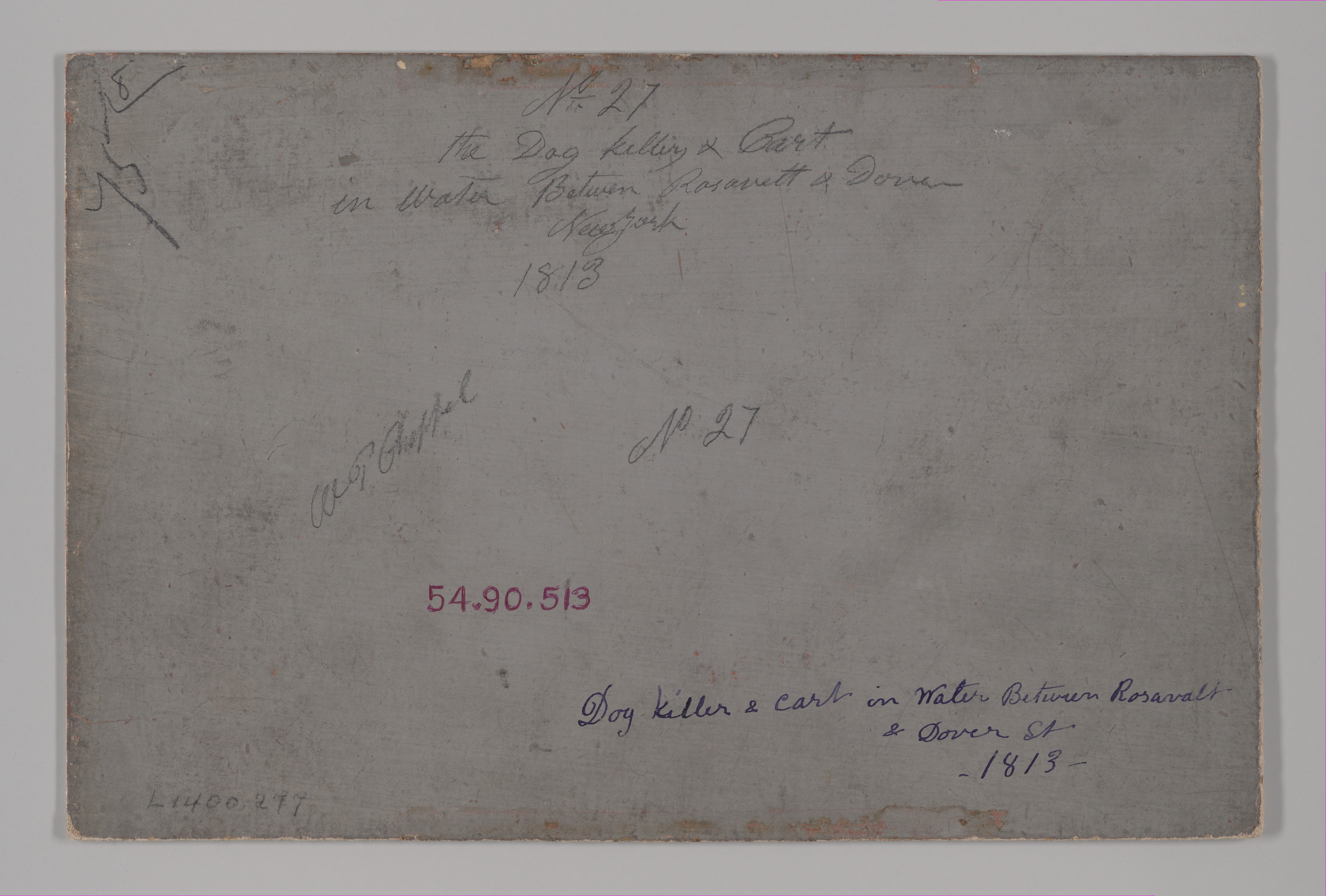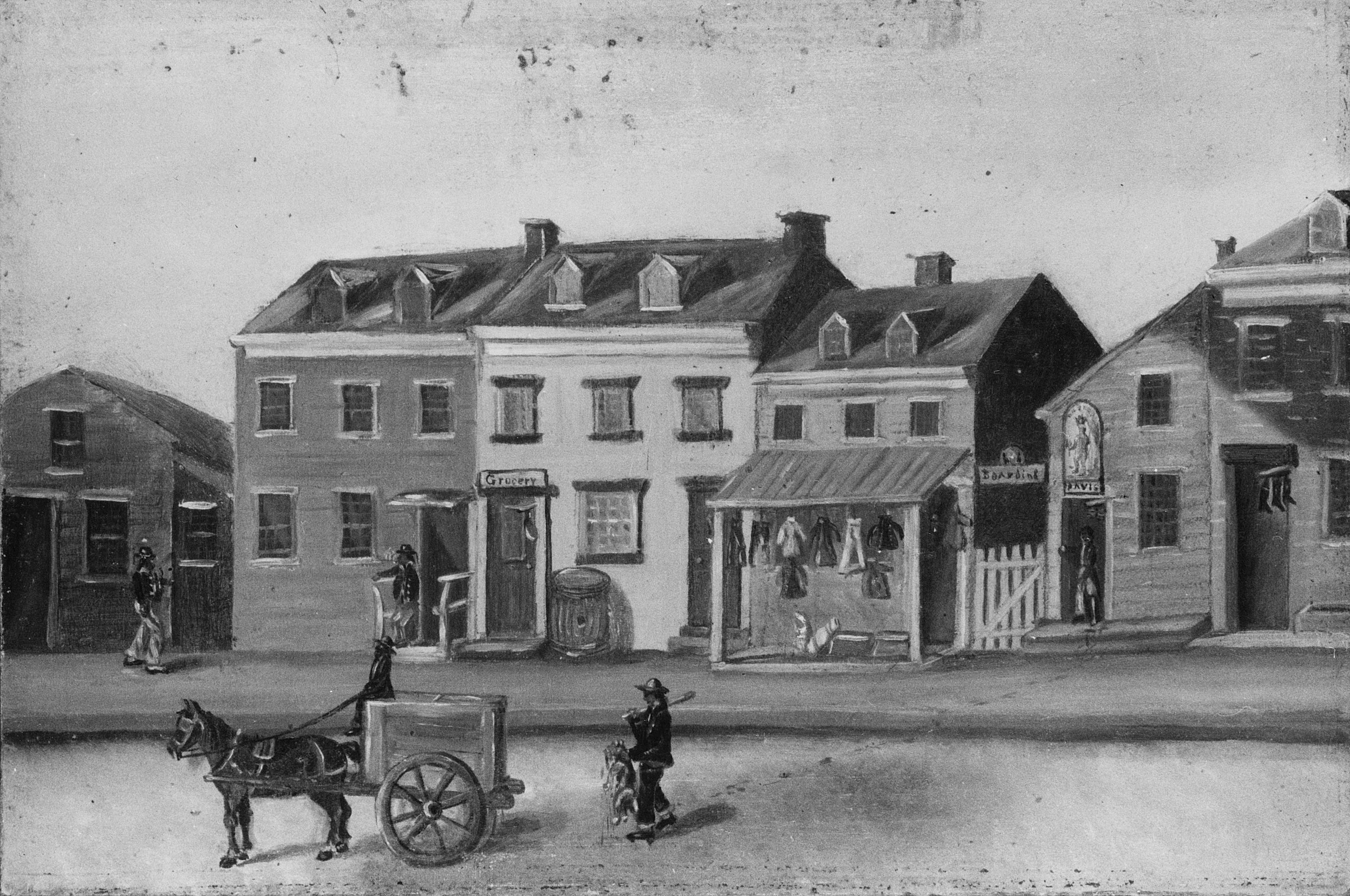The Dog Killer
William P. Chappel American
Not on view
Walking New York’s streets, one risked being bitten by one of thousands of roaming dogs—some feral, others beloved pets—that lived off street refuse. This scene depicts the effects of one infamous attempt at dog population control. According to Catherine McNeur in "Taming Manhattan: Environmental Battles in the Antebellum City," an 1811 law mandated a tax of three dollars per dog (about a week’s wages for an ordinary laborer) and the killing of unregistered canines (bounty hunters earned fifty cents per carcass). The summer of 1811 alone saw more than twenty-six hundred dogs slaughtered (pp.13-15). Many decried the killings as an economically prejudicial affront to common decency. This victim appears to have met his end on the doorstep of Daniel Davis, a boardinghouse owner at 359 Water Street.
This image cannot be enlarged, viewed at full screen, or downloaded.
This artwork is meant to be viewed from right to left. Scroll left to view more.





